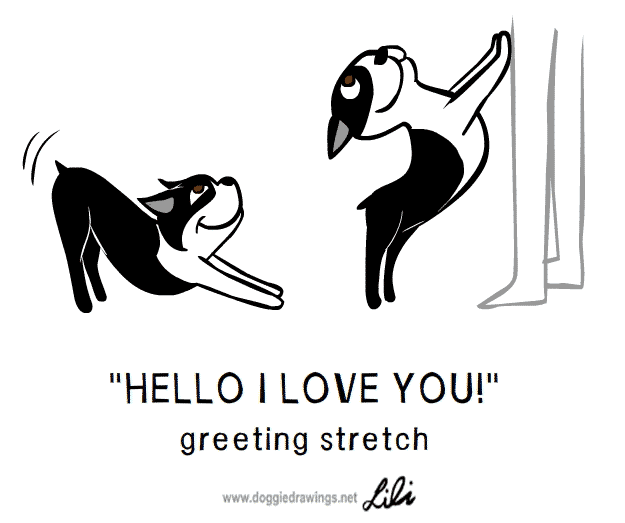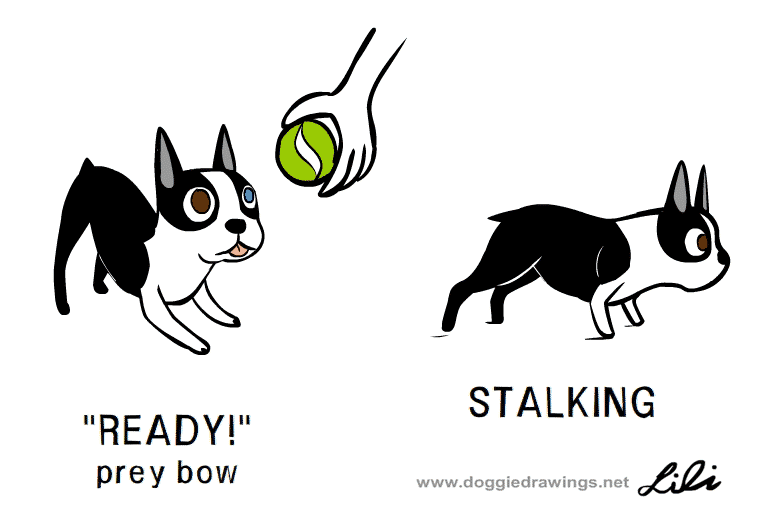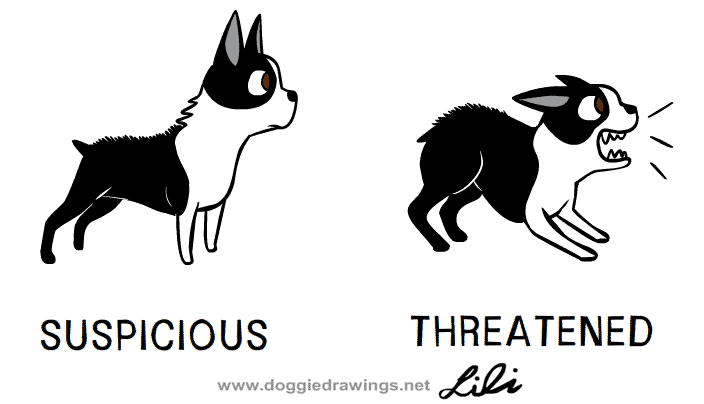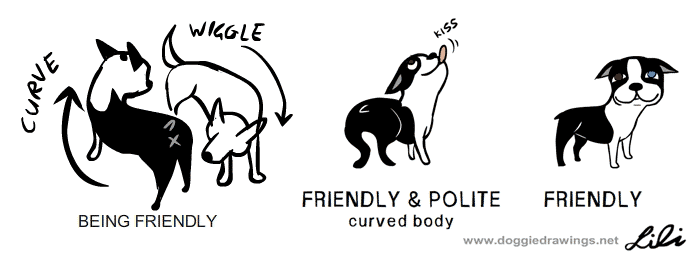- This post contains affiliate links. Read more here.
Have you ever wanted a doggy translator? A dog’s actions speak a thousand words—but interpreting them correctly is a skill that has to be learned. Read on for a helpful illustrated guide that’ll teach you how to have a conversation with your dog.
Stressed or sleepy? Discover the meaning behind dog behaviours
1. “Welcome back!”—When you come home or wake up in the morning and your dog greets you with a stretch, he’s not waking up from a nap or doing puppy yoga, he’s saying hello. This is only used with people he is comfortable with—you won’t see a dog greet a stranger with a stretch.
2. “I’m shy”—Many dogs can be timid around new people, and there are some obvious signs that a dog is shy or nervous. If a dog’s ears are backwards and flat against her head, and she is shrinking back to the ground trying to make herself small, she is uncomfortable.
To make friends with a shy or nervous dog, turn sideways and kneel on the ground. Don’t lean over the dog—keep your back straight. Let her come to you and sniff. You can hold out your hand while keeping your arm still so she can comfortably learn your scent from a little farther away. Avoid reaching over the dog’s head. If she’s comfortable with you trying to pat her (i.e. her ears don’t go back again), pat her back instead of her head.
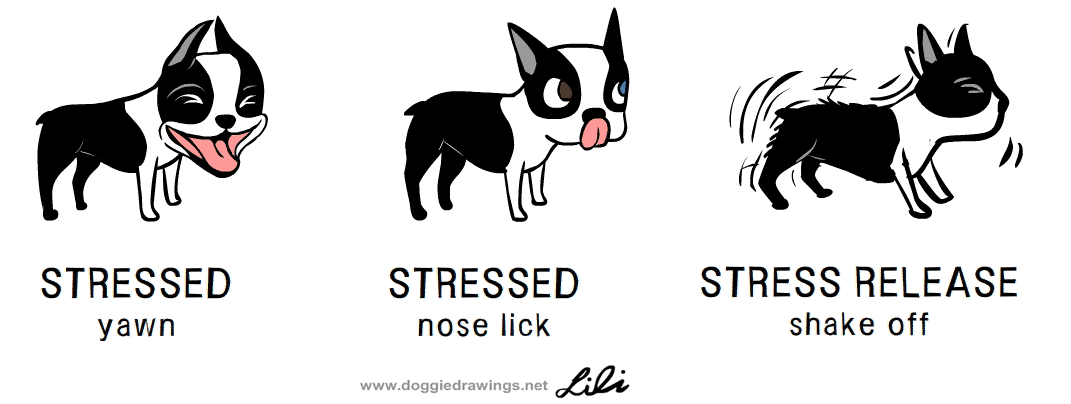
A stressful situation or separation anxiety? The right behaviour solutions will help your dog become the perfect pet.
3. “I’m stressed…but it’s going to be okay, right?”—Canines—wild or domestic—have a series of signals that ask for reassurance when they’re stressed. Another canine, doing the same signal back, is reassuring them. Behaviourists call these “calming signals.” These behaviours seem ordinary to humans, but a dog can do them very deliberately. A yawn, a lick of the lips, and slow blinking are all signals that a dog is uncertain or stressed. If your dog is frequently anxious, talk to your vet or your trainer about a plan. Some helpful tools to combat a dog’s anxiety include:
- Crate
training
- ThunderShirt
or other pressure wrap
- A regular, loving Rover.com dog walker or sitter who provides dog boarding
- Sentry calming collar
- Rescue remedy
or aromatherapy
4. “I want to play!”—Every dog owner has seen their dog bow when they want to play. The play bow is a great way for dogs to communicate with each other, and for you to encourage your dog to play. Typically her body language will be loose and wiggly with a wagging tail. The human version of a play bow is to quickly crouch into a squat, and if your dog does it back, it’s time for a game.
5. “Squirrel?!”—There’s another version of the doggy bow: the prey bow. This looks similar to a play bow, but your dog’s body and tail will be stiff and his eyes wide open and concentrated on the prey object, whether it’s a tennis ball or a small woodland creature. Stalking is another form of body language in reaction to prey. Your dog’s head and neck will be level with the rest of his body, ears pricked forward, and legs bent.
Because of pack mentality, dogs are more likely to display prey behaviours when in groups. These are especially important to watch for when there’s a group of off-lead dogs together.
6. “Don’t come any closer!”—There is one display that universally says, “I mean business, so don’t cross me.” When a dog’s entire body is stiff, her tail up in the air like a flag, with her head and neck raised high and back, she is alert, suspicious, and likely moments away from getting into a fight. Sometimes the hackles (the fur on her back) are raised.
If her behaviour leads to a fight, there are safe ways to break it up. The RSPCA suggests trying to startle the dogs out of it. You can use a sound like a loud clap, shout, or air horn. You can spray water or citronella on the dogs. You can also physically separate them with a barrier like a folded deck chair, bin, or piece of plywood. The most important thing: do not grab the dog’s collar, as that may result in a bite.
7. “Let’s be friends”—A friendly dog greeting involves the dogs circling each other with loose, wiggly body language. There are many situations where you would need to introduce two new dogs, including Meet & Greets before Rover stays. Their bodies should be curved and tails wagging. They may even play bow. Watch for signs of shyness or stiff body language, and ensure the dogs have enough space to separate if they are finished greeting each other.
See more of illustrator Lili Chin’s work in this well-known puppy training guide, as well as at her website.
Want to delve deeper? For an excellent guide to how dogs think, feel, and behave, Alexandra Horowitz’ bestselling “Inside of a Dog” can’t be beaten.

